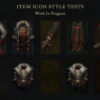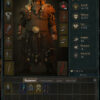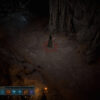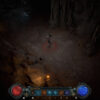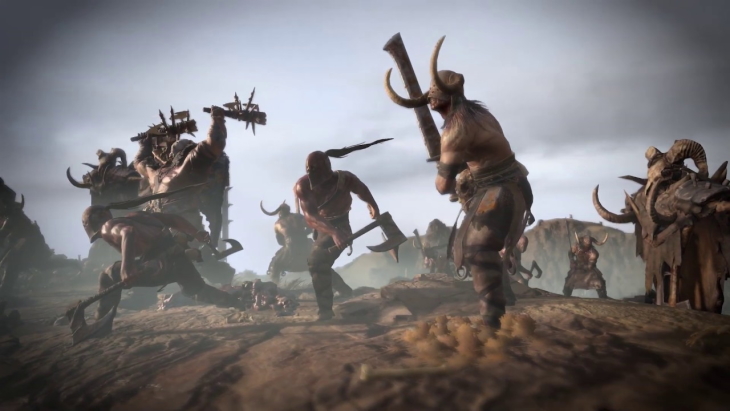
Blizzard Entertainment have revealed the first of their quarterly updates for the development of Diablo IV.
Game Director Luis Barriga introduces the blog post, explaining it will be the first of four quarterly updates chronicling the development of Diablo IV.
This post focuses on “UI Design, Controller Support, and Co-Op” (presented by Lead UI Designer Angela Del Priore), and “Monster Family & Design Highlight: Cannibal Tribes” (by Senior Encounter Designer Candace Thomas).
Firstly, Del Priore addressed feedback the team had received regarding the UI at BlizzCon 2019. While they are not planning to bring back different-sized items (“to avoid interrupting gameplay with pockets of inventory management”), the team are working to address feedback on coloring, item icons, and overall aesthetic.
While item icons were initially in a “painterly style to stay in line with the overall art direction of the game,” it did not work well with the smaller elements of the UI. The team are now “exploring another approach more directly based off the 3D models to give them natural texture and realism.”
Icon backgrounds have reduced brightness and saturation, and additional “secondary visual cues for indicating rarity via the border decoration. This way, we’ve made rarity indicators visually more subtle but hopefully with a wider range in accessibility.”
Discussing “non-specific feedback” regarding inventory, Del Priore stated “we had guesses as to what people were reacting to based on our own observations. We’ve reorganized the layout of the inventory to what is hopefully a more balanced composition, and across the board we’re looking at the color spread and contrast levels of individual UI pieces.”
Del Priore stated the game will have all skill slots rebindable, including the left mouse button. In addition, the action bar will not default to the center on Windows PC. The bottom-left corner option will still be available, as Del Priore claimed the preference changes depending on how far a player is from their screen.
Del Priore also explained the team’s commitment to making the UI work with controllers on PC, while also keeping it similar to how it functions with a keyboard.
“We wanted to give players the ability to switch between the two options freely, so our UI needed to be unified enough that swapping hardware inputs on the fly wouldn’t throw people completely off kilter. A unified UI means our layouts are more grid-based for ease of navigation, but it doesn’t necessarily mean an identical interaction flow.
We try to maintain this sort of approach, of keeping established keyboard and mouse conventions while creating controller-friendly shortcuts or alternate flows, throughout the game. Controller support shouldn’t be a limiter on how complex our game can be; it just means we have more paths that we need to consider. It’s not a simple undertaking, but we’re really striving for a native feel for both types of inputs.”
Finishing Del Priore’s segment, she revealed that in Diablo III, the “overwhelming majority” had used the game’s couch co-op for 2-player games. As such, the team are seeking to resolve issues that were found in those titles- such as in the Reaper of Souls expansion, where “the biggest complaint was the inability to do anything while one local player had a UI screen open.”
“For Diablo IV, we decided to focus on improving the favored 2-player co-op experience and set up our core progression UI screens such that they can be opened independently or at the same time.”
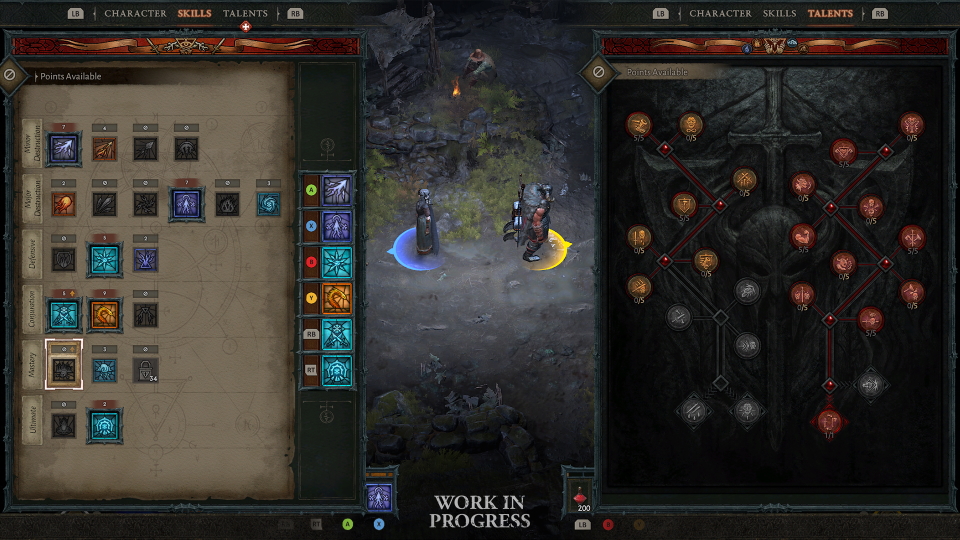
Moving onto “Monster Family & Design Highlight: Cannibal Tribes,” Thomas showed the models for the Cannibal Tribes. You can find the video of that below:
Thomas further explained that monsters are classified into “families,” such as the Fallen, the Drowned, the Cultist, and the Cannibals. The design philosophy behind this was due to Diablo IV‘s “vast and seamless world,” where classifying monsters in broad categories such as Undead or Humanoid (as it was in Diablo III), would hinder worldbuilding and storytelling.
“It requires building Sanctuary as a living, breathing character—especially through its creatures. Since we have everything from serene ocean cliffsides to the gaping maw of Hell itself, what does that mean for the bestiary? Well, to fill those areas and make them feel real, we definitely needed to have more non-aggressive wildlife than in Diablo III. But never fear, we still have plenty of monsters to fight.”
While the team still “pay tribute to some hallmark gameplay—such as Fallen Shamans resurrecting other Fallen,” Thomas explains that “every monster has been reimagined, but in a darker, more gritty art style,” along with some gameplay of “things in other places” being “completely reimagined.”
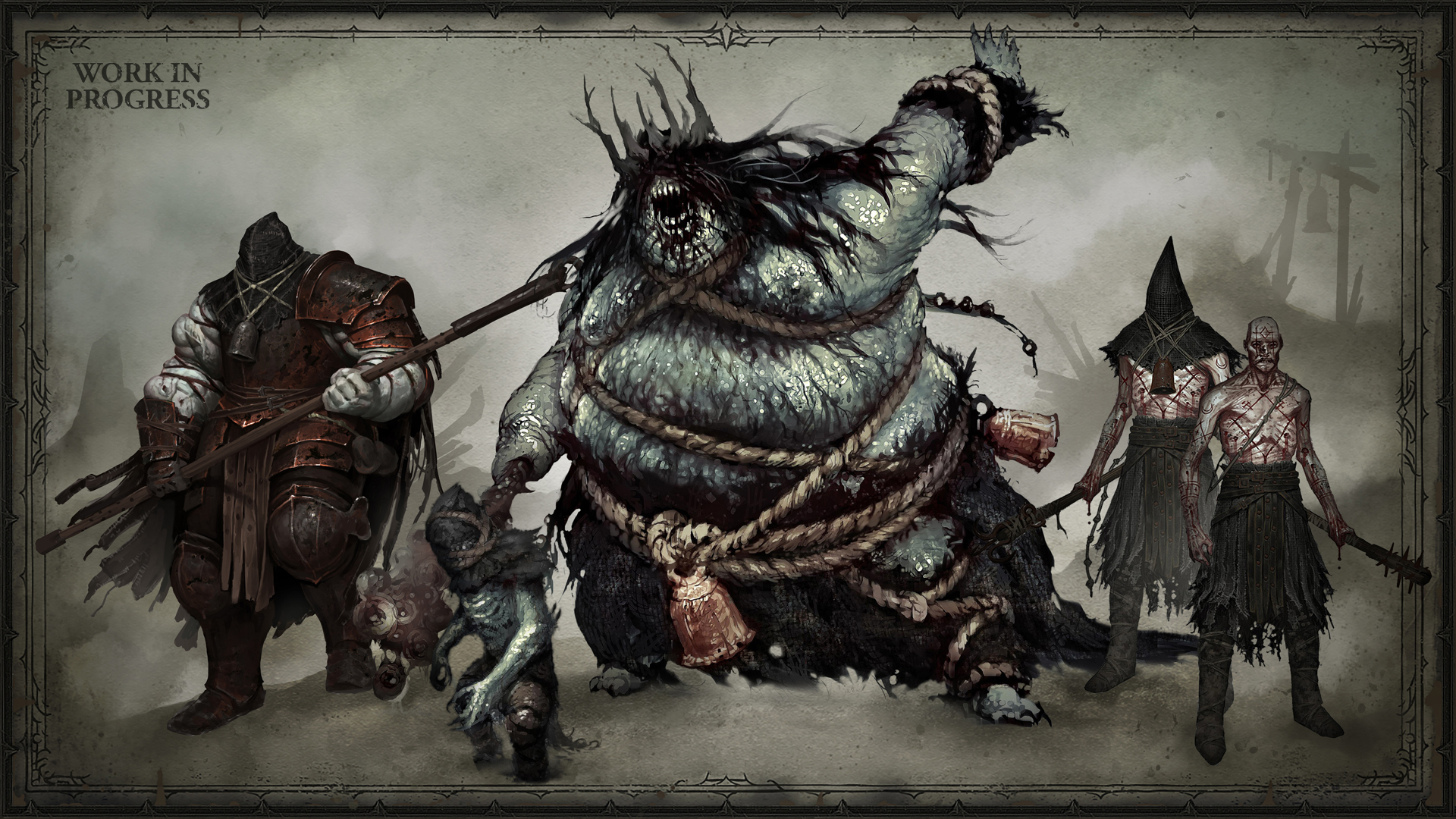
Each monster family will utlilize a different combat style. Using the Drowned as an example (above), the family is made of five archetypes; “bruiser, ranged combat, melee combat, swarmer, and dungeon boss.” Each of these archetypes fills a different role in combat, so players can get the most out of their abilities.
“Swarmers strike in groups, making AoE attacks feel satisfying. Bruisers are larger monsters with high health values, which will make damage over time abilities feel good. Melee combat units act as shields by standing in the way of projectiles for their ranged counterparts. Situations like this provide the player with interesting positional dilemmas if they want to focus fire on ranged units. When adding all of this together, each encounter with the Drowned will be slightly different with regards to player positioning and choice of attack. These rich and varied combat experiences are the power of a monster family.”
Next, Thomas showed artwork of the Cannibals, along with in-game lore on the faction. You can find that below:

“Corpses riddled with bite marks. Splintered bones scraped clean of marrow. Tongues sawed off and eyes gouged out of their skulls. These are the bloody fingerprints the Cannibals leave behind—if they leave behind anything at all. No one is certain where they come from, but some legends claim they are a former tribe of barbarians, banished from Arreat years ago. Whether their cannibalism led to their exile or developed out of desperation afterward is unknown. The outcasts brought their endless hunger to the Dry Steppes, and from there spread to the far corners of the world to prey on lonesome caravans and unsuspecting villages.
The few who have survived encounters with these butchers share the same stories. They tell of the mad fire that burns in the eyes of all Cannibals, of how eating the flesh of their victims in battle only fuels their hunger for more. They whisper of the unlucky souls spared in the attacks, hauled off like livestock for the raiders to pick clean until their next hunt. And then, they say no more. The silence speaks for them: sometimes it is better to die than to live and remember.”
—Liya Khal’tib
The devblog then discussed the Cannibals combat design. Made of four members, each have their own weapons and silhouette to help differentiate them.
For example, the two melee combatants have either a two-handed greatsword cleaver (delivering slow but wide frontal attacks), or a halberd (letting them leap into the player from a distance). The Cannibals also have no ranged units, with some archetypes preferring to approach the player by leaping or swift movement.
The bruiser has a spiked club which can stun, while swarmers unleash a barrage of attacks with their dual axes. “If the player finds themselves surrounded by flurrying swarmers, getting hit by the bruiser’s dazing blow would remove all possibility of escape. It’s combinations of attacks like these that make this family so deadly.”
Diablo IV is coming soon to Windows PC, PlayStation 4, and Xbox One.
